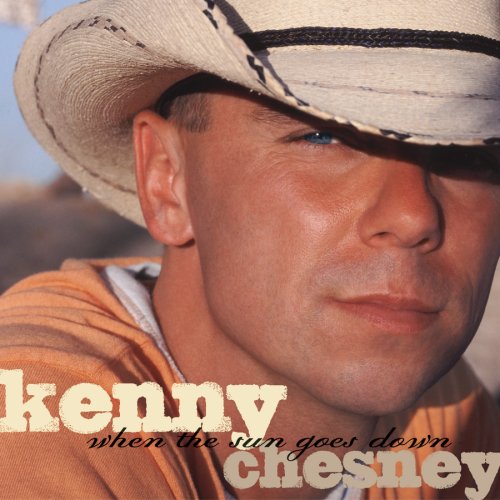Written by Hannah Evans. 3 November 2015.
I stumbled upon “I Go Back” by Kenny Chesney right before my 8th grade graduation as I searched for a song to play behind the ceremony’s slideshow. Due to the nostalgic mood it conveyed, I was automatically hooked—and (according to my mom) annoyingly played it over and over again. The song was perfect for a slideshow meant to cause students to reminisce (but we ended up not being able to use it because of its reference to “raspberry wine”…I know—seriously?). More importantly, my desire to use this song for a nostalgia-inducing slideshow perfectly demonstrates the effectiveness of its argument: through the use of allusions to other songs and the resulting imagery, combined with the nostalgic mood, “I Go Back” demonstrates the power that music has to induce memories.
A fan of rock & roll and country music throughout his youth, the songs Chesney listened to impacted him in a multitude of ways—whether it be coping with a break up through Lynyard Sknyard’s “Free Bird”, or re-experiencing time spent with his grandfather through “You are My Sunshine”. His desire to write “I Go Back” roots from his belief that “we’re all richer” due to music’s ability to “melt time and take us back”. Inspired by a variety of songs from his younger years, Chesney believes that music’s ability to metaphorically transport people in time is a universal experience—and an important one, at that.
Released in May 2004 off of his album When the Sun Goes Down (which won in the Album of the Year category at the Country Music Awards in 2004), “I Go Back” spent seven weeks at the number two position on the U.S. Billboard country music chart. Through the song’s success, it’s obvious that it was meaningful and relatable to a wide-range of people. “I Go Back”’s intended audience is likely those who have graduated college (as he reminisces about his college days) or those who are knowledgeable about the songs Chesney alludes to. However—as showcased by my experience as an 8th grader—this song makes an impact on anyone who feels nostalgic about a past time in his or her life. Within the song, Chesney claims “we all have a song…that takes us to another place and time”. He reinforces and clarifies a concept that most people likely already understand—even if they don’t realize it.
To appreciate the song to its full extent, there are several assumptions the song is asking the audience to make. First, the song assumes the audience has a song that takes them back to a certain place and time and creates nostalgia. This is a generally agreeable statement unless someone has never listened to music, or fails to recognize that he/she’s had this experience. Similarly, Chesney assumes the audience has positive memories and experiences that they desire to reminisce about. It’s possible that someone had a difficult childhood/young life and they can’t relate to any of these experiences that Chesney sings about (or their past memories don’t create a positive nostalgia). However, even if one did not have any of these exact experiences (or one’s similar to them for that matter), Chesney leaves room for the audience to remember their own personal stories and memories.
Furthermore, we assume that certain experiences Chesney sings about are ones that he would deem positive. For example, “the smell of an old gym floor” may not be something that people would generally miss. But, we assume that this smell is meaningful to Chesney because he claims it made him wish “time would stop right in its tracks”. Most people would likely agree with this—even if an old gym floor isn’t their idea of a positive smell—because it brings the audience back to their youth regardless of the precise imagery.
 One of the most effective rhetorical strategies Chesney uses throughout “I Go Back” is his allusion to three specific songs and the resulting imagery. The first song alluded to is Johnny Mellencamp’s “Jack & Diane” (1982). The song tells the story of a high school couple’s realization that their best days will soon come to an end. Chesney felt as though he really related to this song and that “this crazy world made more sense” after he contemplated it. In the first chorus, Chesney goes on to explain the exact memories the song reminds him of regarding some past relationships. For example, as Kenny Chesney first had sex at age fifteen, one can assume that when he sings about spending time with a girl, a blanket, and wine in the middle of the football field, he is potentially referring to the loss of his virginity. The specificity of this story causes the listener to create an image in their head of whatever similar memory about a young love the song brings up for them.
One of the most effective rhetorical strategies Chesney uses throughout “I Go Back” is his allusion to three specific songs and the resulting imagery. The first song alluded to is Johnny Mellencamp’s “Jack & Diane” (1982). The song tells the story of a high school couple’s realization that their best days will soon come to an end. Chesney felt as though he really related to this song and that “this crazy world made more sense” after he contemplated it. In the first chorus, Chesney goes on to explain the exact memories the song reminds him of regarding some past relationships. For example, as Kenny Chesney first had sex at age fifteen, one can assume that when he sings about spending time with a girl, a blanket, and wine in the middle of the football field, he is potentially referring to the loss of his virginity. The specificity of this story causes the listener to create an image in their head of whatever similar memory about a young love the song brings up for them.
 The second song “I Go Back” alludes to is “Rock n’ Me” by the Steve Miller Band in 1976. Chesney graduated from East Tennessee State in 1990 with a degree in advertising, and his nostalgia for college life is evident through the allusion to this song. He reminds the audience of positive life experiences like graduating and partying with friends. Even if one has not graduated from or attended college, they are likely still able to relate to the happiness that comes with moving on to a next stage in life or the feeling of invincibility that many experience during youth. Chesney expresses the specific images of “frat parties” and the “Carolina shore” that encourage listeners to contemplate their own similar memories.
The second song “I Go Back” alludes to is “Rock n’ Me” by the Steve Miller Band in 1976. Chesney graduated from East Tennessee State in 1990 with a degree in advertising, and his nostalgia for college life is evident through the allusion to this song. He reminds the audience of positive life experiences like graduating and partying with friends. Even if one has not graduated from or attended college, they are likely still able to relate to the happiness that comes with moving on to a next stage in life or the feeling of invincibility that many experience during youth. Chesney expresses the specific images of “frat parties” and the “Carolina shore” that encourage listeners to contemplate their own similar memories.
Furthermore, “Only The Good Die Young” by Billy Joel (1977) is about a young man who tries to convince a Catholic girl to let him take her virginity. It was very controversial at the time—but Chesney’s take on it within “I Go Back” doesn’t read so much in to these details. Instead, “Only The Good Die Young” reminds Chesney of his friend, Lance Wilson, who was tragically killed in a car crash at age sixteen. The allusion to this song reminds people that life is temporary, and may bring back memories of loss that people have experienced. This allusion is different than the other two in that the memory it brings back is obviously negative. Chesney thus proves that songs are impartial as to what emotion the memory correlated with the song will cause; songs can bring back a whole different range of emotions and they are all equally important and authentic.
Through the use of allusions to different songs and the imagery involved with each instance, a nostalgic mood is conveyed. The listener is left to look back on their own personal memories that Chesney’s discussion reminds them of. Similarly, the slow/mid-tempo sets the mood for reminiscing. Overall, the effectiveness of this song’s argument is evident through it’s creation itself; hearing “I Go Back” takes the listener back to times from their youth (like the time in 8th grade when I was searching for the perfect song for a slideshow). Alert all the scientists that there is no longer a need for time machines—Chesney’s “I Go Back” proves that all you need is a good old song to transport you through time.
| Time | Form | Listening Cues | Discussion |
| 0:00 | Intro | Drum & guitar | An electric guitar is strummed while drums establish the beat. Acoustic guitar is introduced shortly before Verse 1 is introduced. The mood is positive and slightly nostalgic. |
| 0:21 | Verse 1 | “‘Jack and Diane'” | Chesney provides the specific example of the song “Jack and Diane” and how it helped him become the person he is today. He sets up the next verse where he will discuss the specific memories this song reminds him of. The last two lines rhyme. The verse is slow and nostalgic. |
| 0:42 | Chorus 1 | “I go back to a two tones short bed…” | The pace picks up here as the song becomes more upbeat. Chesney tells the memories that this song reminds him of. Through the mood established, it is assumed that these are positive and happy memories regarding a childhood love. There is a AABCCDD rhyming scheme used with the last word of every line. He holds “I go back” at the end of the verse. The final two lines are very similar to the one’s sung in verse 1. |
| 1:15 | Instrumental | Guitar | Short transition before he goes on to discuss the next song and it’s meaning to him. The break helps the song flow better as he transitions from a faster pace to a slower one. |
| 1:19 | Verse 2 | “I used to rock all night…” | The pace of the song slows down once again. The electric guitar is no longer evident. Chesney sets up the next song and some of the memories that belong with it. Through the nostalgic mood established, it is assumed that these are positive memories regarding his youth. He repeats the lines “I heard it today….” and “Cause every time…” like he used in the first verse. A pattern is being established and the last two lines rhyme again. The final two lines are very similar to the one’s sung in verse 1 and 2. |
| 1:40 | Chorus 2 | “I go back to the smell of an old gym…” | The pattern continues where Chesney goes on to discuss in further detail the memories he has from the song presented in the previous verse. The song again picks up pace here and is more upbeat. The electric guitar is re-introduced mid-way through the song. He notes how he realized at the time these memories were taking place that time would “stop in it’s tracks” which clarifies the nostalgia he hopes to express to the listener. He again follows the AABCCDD rhyme scheme. Chesney holds “I go back” at the end of the verse. Only the very last line is repeated as done so in verse 1, 2, and 3. The second to last verse is different—breaking the established pattern. |
| 2:13 | Instrumental | Guitar | Short transition similar to the previous one before Chesney goes on to the next verse. Like before, the break helps flow the song from an upbeat to a slower pace. An electric guitar is used. |
| 2:!8 | Bridge | “We all have a song that somehow stamped…” | This is the first time a two-lined verse is sung. It breaks the established pattern where he transitions from an opening verse to a more detailed discussion of the song. This verse is important as it helps clarify the message of the song. A slant rhyme is used within the two lines. It slows the song down. |
| 2:32 | Chorus 3 | “So I go back to a pew…” | Chesney ends this verse with the song he is discussing instead of beginning the verse with it like he did previously. This breaks the pattern and has a slower pace. This is the first time that Chesney brings up a more serious memory that he holds about his friend passing away—the first obviously negative memory. This discussion of his friend passing away helps show that songs don’t always bring back happy memories, they can be negative as well. It helps make the song more realistic. He holds “I go back” in the last line as done previously. The last line is the same one as used in verse 1, 2, 3, 4, and 5. |
| 3:09 | Verse 3 | “To the feel of a fifty yard line…” | This verse sort of acts a summary of the entire song; he takes two lines from each of the previous “detail” verses and alternates them with the line “I go back”. There is an echo on each “I go back” sung by multiple people (some or all of which are female). This helps to end the song and potentially shows how the ideas he sings about are relatable to more people than just him. |
| 3:36 | Outro | Song fades out | Song comes to a conclusion as Chesney repeatedly sings “I go back”. This ends the song on a slower note in a similar fashion to how it began. |
Works Cited
Foley, Corey, and Greg Thunder. “Is Kenny Chesney Going To Get Married Again? He Tells Foley & Thunder Here.” Interview. Audio blog post. The Bull. 100.3, 19 June 2012. Web. 3 Nov. 2015. <http://thebull.cbslocal.com/2012/06/19/is-kenny-chesney-going-to-get-married-again-he-tells-foley-thunder-here/>.
Hutchinson, Lydia. “Billy Joel’s “Only the Good Die Young”” Performing Songwriter. N.p., 9 May 2012. Web. 03 Nov. 2015. <http://performingsongwriter.com/only-good-die-young/>
“Jack & Diane by John Mellencamp.” Songfacts. N.p., n.d. Web. 03 Nov. 2015. <http://www.songfacts.com/detail.php?id=3829>
“Kenny Chesney.” Billboard. N.p., n.d. Web. 03 Nov. 2015. <http://www.billboard.com/artist/305717/kenny-chesney/chart>
“Kenny Chesney Interesting Facts.” Online Tickets. N.p., n.d. Web. 03 Nov. 2015. <http://www.onlinetickets.com/info/country_and_folk_tickets/kenny_chesney_facts>
“Memories in Music.” Country Weekly. N.p., n.d. Web. 03 Nov. 2015. <http://www.countryweekly.com/vault/memories-music>

